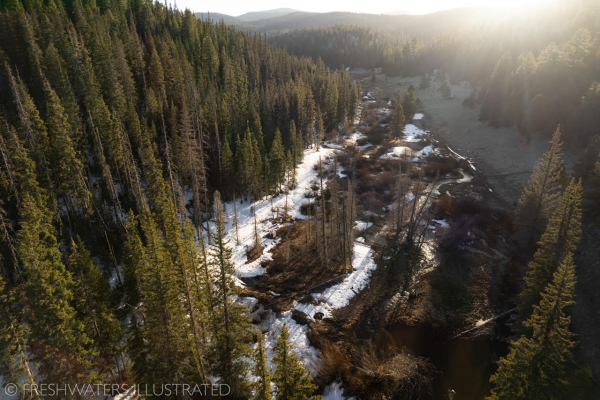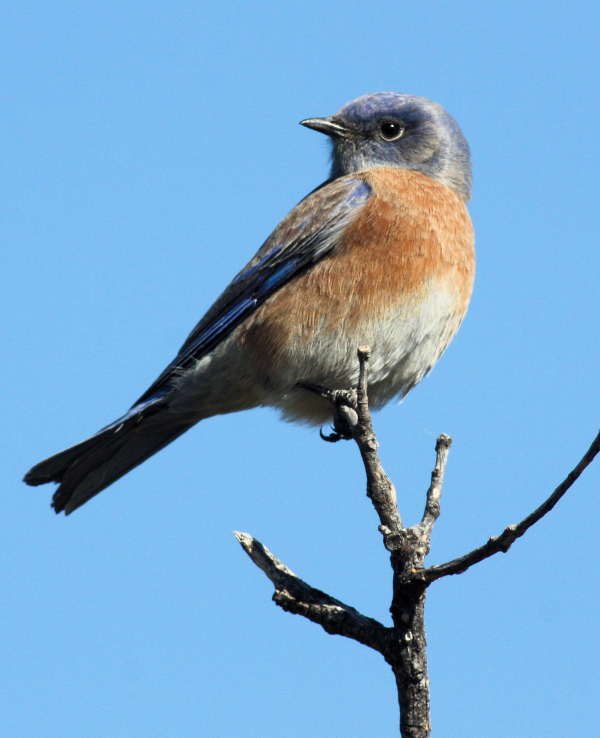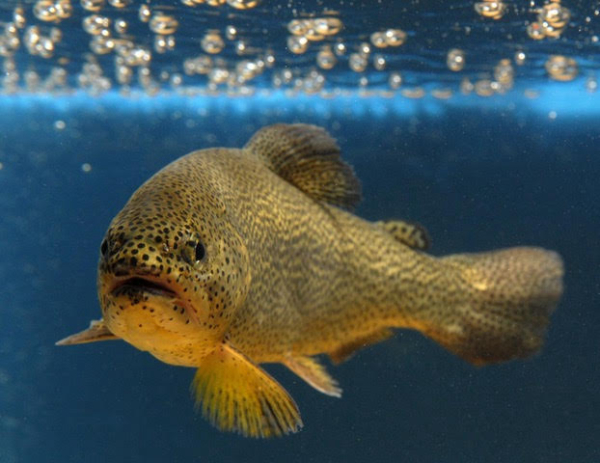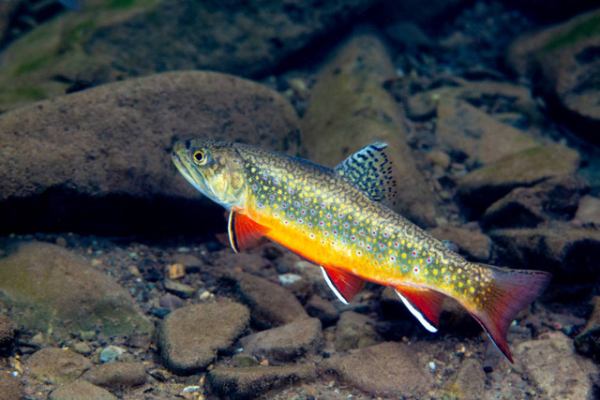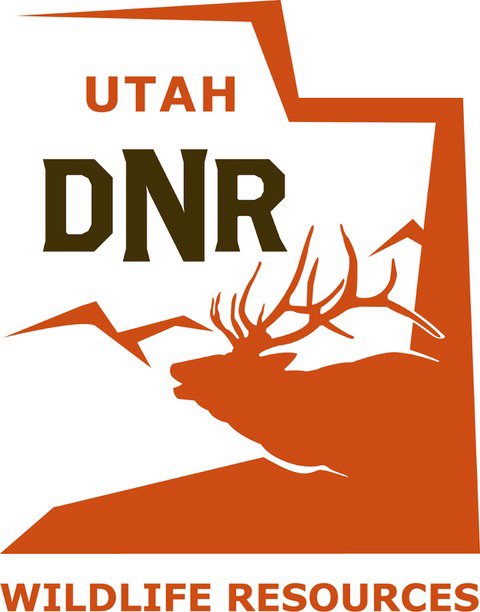Opening Day of Fishing Seasons Are A Rebirth
This weekend marks opening day of fishing season in many parts of the country. Today, Craig Springer shares some of the reasons why it’s such a special occasion for many anglers.
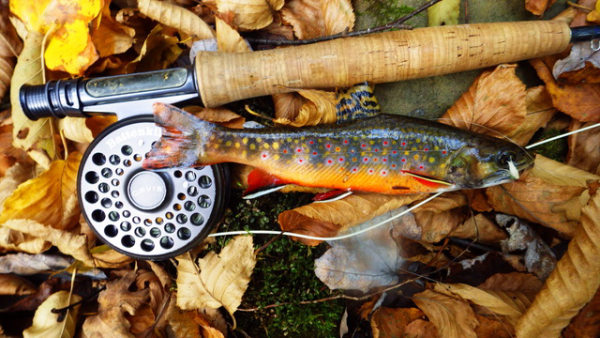
— Craig Springer, USFWS, Wildlife and Sport Fish Restoration
April can be a cruel time of year in northern-tier states; it’s not quite spring, not quite winter. But it brings with it opening day of fishing seasons. Welting sleet spit from gunmetal gray clouds or a sunlit bluebird sky—no matter the weather, anglers of all stripes are out on the water when trout, walleye or other sport fish species come into season, open for fishing after a winter-long hiatus.
Opening day of trout season is a cultural phenomenon, said Tim Schaeffer, Executive Director of the Pennsylvania Fish and Boat Commission (PFBC). “It’s deeply historic. Opening day has a long happy history,” said Schaeffer. “It’s almost carnival-like—it’s a rich tradition in Pennsylvania.”
Opening day is of course, one day out of the year. From a fisheries management perspective, preparing for opening day is a yearlong process, according to Schaeffer. The PFBC operates 14 state fish hatcheries, eight of which raise trout—3.2 million brook, brown, and rainbow trout are stocked by the agency each year in Pennsylvania.
“Hatcheries run 24/7/365,” says Schaeffer. “It’s a constant cycle of work. Field biologists contribute to that cycle; their assessments determine where to stock and what habitat concerns need addressed. Conservation officers work with our biologists to I.D. stocking locations.”
Rod and gun clubs and sportsman’s groups in Pennsylvania also figure into the whole affair, contributing another 1 million trout from about 150 cooperative nurseries statewide before and after opening day. “Anglers are deeply invested in conservation,” noted Schaeffer.
Anglers’ license fees are a literal investment in conservation, an integral part of the American system of conservation funding that pays for research and fisheries management angler and boating access, and raising and stocking over 1 billion fish nationwide each year. Excise-taxpaying fishing tackle manufacturers also pay the freight via the Sport Fish Restoration Act. “Industries are our investment partners on behalf of anglers and boaters,” says Schaeffer. “Without their excise tax dollars, we would not be able to perform our conservation work—without industry, fish and wildlife agencies would be adrift.”
Eric Palmer, Director of Fisheries for the Vermont Fish and Wildlife Department agrees. “We understand and appreciate the support of the tackle industry,” said Palmer.
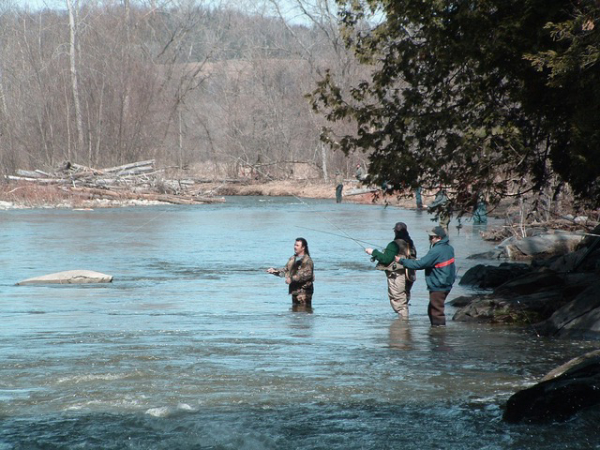
“The longstanding Sport Fish Restoration Act provides steady and reliable conservation funding. It’s especially important in a small rural state like Vermont.”
In Vermont, opening day is a cultural event, according to Palmer. “There are many social gatherings. Clubs host pancake breakfasts and fly-tying clinics. It’s really about a movement from winter to spring and new beginnings.” The opener for brook, brown, and rainbow trout occurs on the second Saturday in April. That means catch-and-release restrictions are lifted on trout. Steelhead are running upstream, then, too. Fishing license sales reach a crescendo in mid-April, says Palmer, showing what is on the minds of many anglers.
Funds from Sport Fish Restoration excise taxes are key to making fishing good in Vermont, according to Palmer. “The funds help in a variety of ways such as managing good stream flows and ensuring good habitat along and within streams,” said Palmer. “We have secured tree root wads in trout streams to allow the water flow to scour out sediments, create cooling shade, and deepen pools and runs for trout. The tax dollars also pay for boat ramps, parking lots, and safe roadside pull offs so anglers can get on the water.”
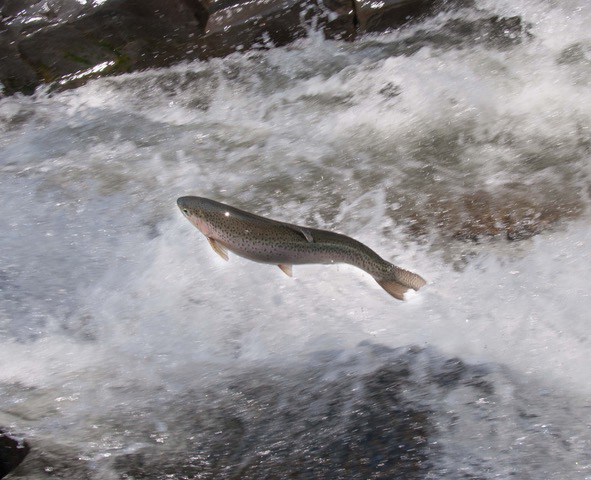
Vermont’s fish hatcheries supplement the steelhead runs and walleye in rivers flowing into Lake Champlain.
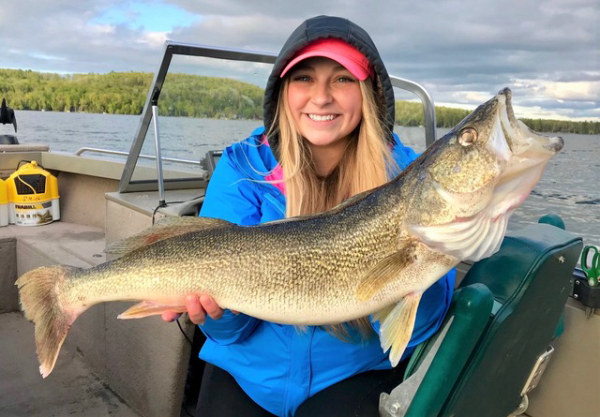
Walleye are also hugely popular in The Wolverine State. Spring openers in April and May for walleye, trout, and northern pike are quite historical, according to Michigan Department of Natural Resources’ chief of fisheries, James Dexter.
Most of the preparation of opening day centers on brook, brown and rainbow trout. The state agency stocks trout at 700 different sites, all supported by funding from Sport Fish Restoration. “Many of the inland trout creeks and lakes are put-grow-take fisheries, sustained by our hatchery system,” said Dexter. “Every corner of the state is getting fish, and they get there by a fleet of modern trucks. Excise taxes paid by industry support our entire hatchery system.”
Michigan is bounded by four Great Lakes, and manufacturer excise tax dollars are critical for research and management of lake trout, yellow perch, coaster brook trout, and walleye fisheries.
Whether your home waters harbor steelhead plowing upstream, walleye in the dim light of a deep lake, or put-and-take trout in a stream, the longer days and warming air harkens a new day and new adventures. Anglers embrace the happiness of the pursuit.
“Opening day in Pennsylvania is a rebirth,” said Schaeffer. “Anglers are optimists—they always have something to look forward to. Conservation makes that possible and would not happen without the support of those who fish. We thank them for that and wish them more enjoyable days on the water.”
Learn more at Partner with a Payer.


